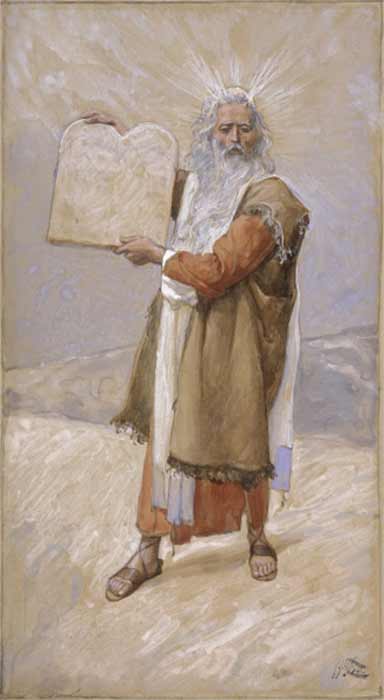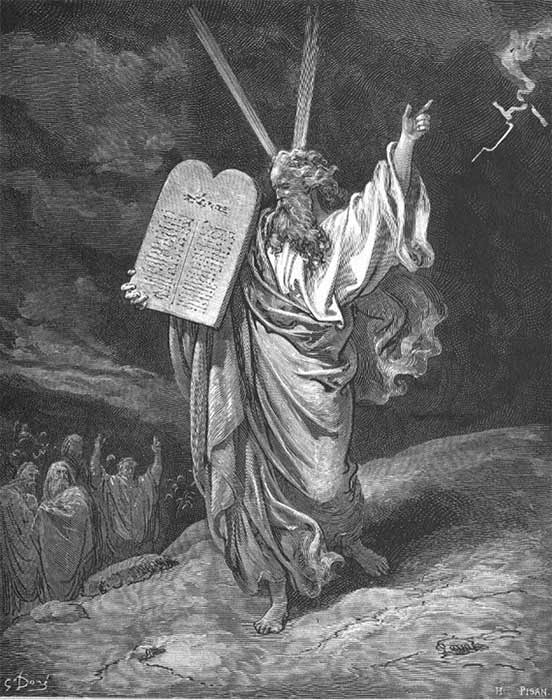
“His Face Was Radiant”: Pulling Back The Veil On The Mystery Of Moses’ Shining Face
One of the Bible’s most enduring exegetical enigmas has to be the strangely shining semblance of Moses. The Book of Exodus relates how after the great Hebrew lawgiver receives the Ten Commandments from the Lord, he descends Mount Sinai, upon which everyone notices his face has become newly ‘radiant’. Fearful, they withdraw from Moses, and he is forced to wear a veil whenever addressing the people. This incident has remained a perplexing problem for centuries, first because the Hebrew verb meaning ‘to send out rays’, qâran, can also mean ‘to grow horns’, but second, because of the inherent difficulty in visualizing what exactly was happening to Moses when he was qâran. Was the skin of his face sending out light rays, or was it growing horns?

Moses and the Ten Commandments by James Tissot (1896-1902) Jewish Museum, New York. (Public Domain)
Those who view Moses as merely an ancient myth or even an invented solar deity suggest that his shining face is an example of his association with ancient Near Eastern solar gods like Ra, Helios, or Shamash. Traditional commentators like Philo of Alexandria suggested that the Glory of God had somehow rubbed off on Moses. Modern scholars like Gary Rendsburg suggest that this was a later literary device used to make Moses the equal of pharaoh, who likewise during the 18th to -20th dynasties wore ram horns and was described in contemporary texts as ‘shining like the sun’. The present author contends that Moses’ shining face is actually a clue to his own secret royal past, hidden in plain sight in the Bible. If Moses was indeed a king, who was he?

Moses Comes Down from Mount Sinai, by Gustave Doré, (1866.) An example of the integration of the ideas of horns and light rays into literal “horns of light rays”(Public Domain)
And Then I Saw His Face
The story of Moses’ glowing face takes place at the conclusion of the Revelation by Yahweh of the Law of the Covenant. God had given Moses a new law code and instructions for the Tabernacle. After 40 days of communion with God, Moses descended the mountain with the tablets of the Ten Commandments. The mystery begins when Moses re-appears before the people of Israel, who are suddenly filled with fear and awe at the sight of him, a seemingly transformed him.
Like this Preview and want to read on? You can! JOIN US THERE ( with easy, instant access ) and see what you’re missing!! All Premium articles are available in full, with immediate access.
For the price of a cup of coffee, you get this and all the other great benefits at Ancient Origins Premium. And - each time you support AO Premium, you support independent thought and writing.
Jonathon Perrin is a petroleum geologist who has helped excavate numerous prehistoric Native sites in Canada. With a degree in geology and archaeology, his passion is writing about ancient mysteries and uncovering the subverted truths of history. He is the author of Moses Restored: The Oldest Religious Secret Never Told, available in its brand new Second Edition as a print or e-book from Amazon.com.
Top Image: Radiant face of the “Shining One of the Aten”, Akh-en-Aten (author provided).















